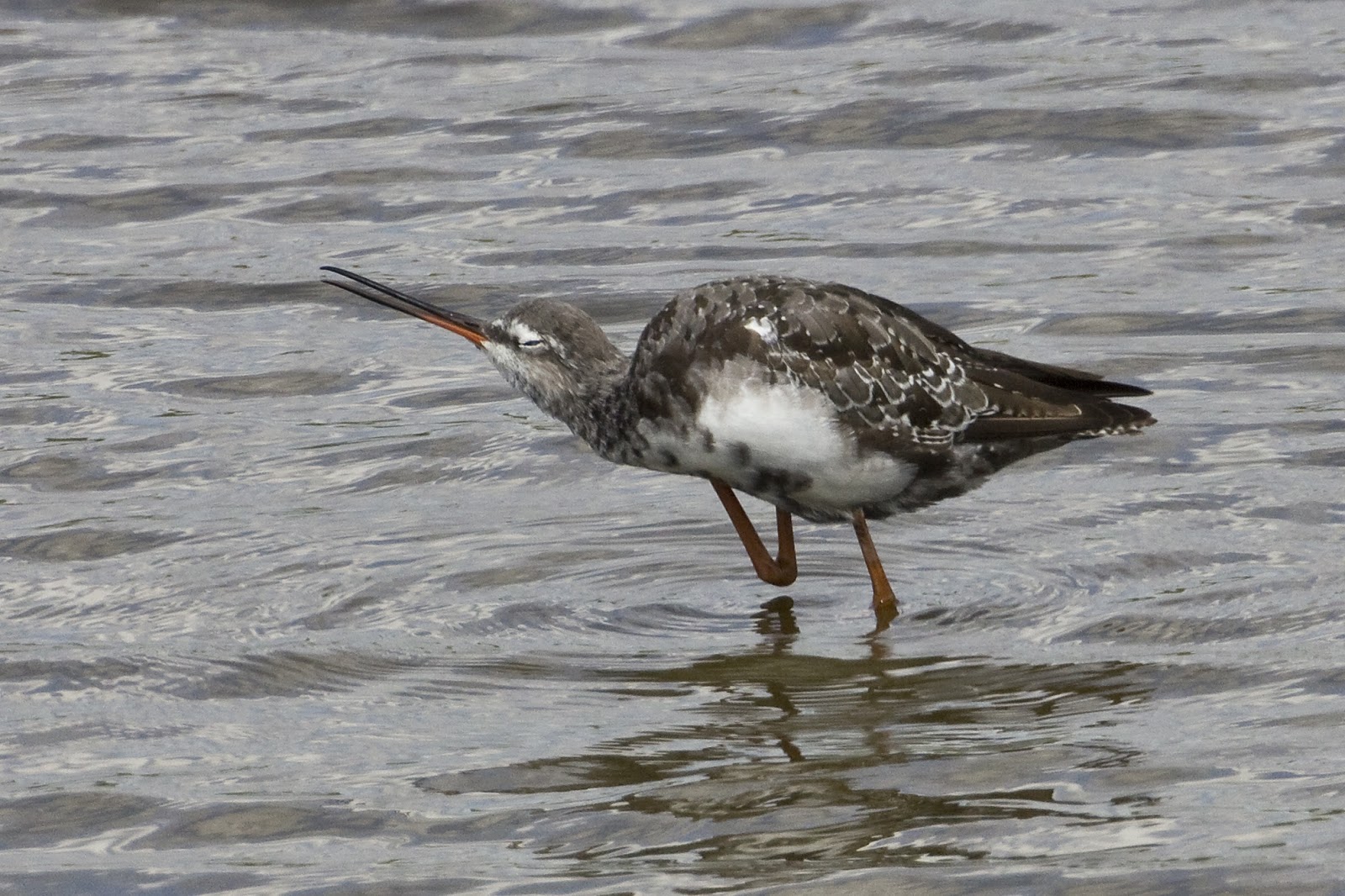Out with Dave on Tuesday and it was back to Pagham Harbour still looking for a Yellow Wagtail. First stop was Church Norton but there had obviously been a big clear out overnight and there was very little showing. Nice to see Dave mobile again, but it was just as well that I had him to talk to as there was nothing happening on the birding front. The best we could manage were distant views of a Restart and also of a Spotted Flycatcher as we returned to the car park.
The Long Pool gave distant views of a Greenshank and whilst the Ferry Pool had a good few birds on it they were mostly distant as well.
Next stop was the North Wall and as with yesterday the Sand Martins and Swallows were still gathering on the power lines at the entrance. Lots of chattering and preening going on in preparation for migration.
 |
| Sand Martin |
There was nothing outstanding on the Breech Pool or in the Creek, but there was a constant stream of interesting birds. I checked Dave's blog and as I expected, he had spent so long enjoying the sunshine and talking to people, that he had forgotten to take pictures of most of them.
There were Common Sandpipers and a possible Curlew Sandpiper in the creek but they were difficult to photograph against the harsh backlight. These two were out on the harbour wall. There is quite a difference in size but they both look like Commons.
 |
| Common Sandpipers |
The Spotted Redshank was still around but that has been in my last two blogs. There were a couple of Snipe showing well and also two Dunlin that were being harrassed by the Lapwings whenever they approached too close. Whilst a common wader the Dunlin are still an attractive bird.
 |
| Dunlin |
 |
| Snipe |
One of the more interesting birds of the day was this Starling that came in at the back of the Breech Pool. Its the first time I had seen one looking like this.
 |
| Starling |
The Yellow Wagtails were about but keeping their distance again. I need to get a few shots of them when they are feeding around the cattle, where they seem much more approachable. There is also a Canary Yellow male about the North Wall somewhere. I had seen it the previous day but only managed a blurred shot of its top half and it showed fleetingly again today.
 |
| Yellow Wagtail |
The ducks are starting to return with Teal already in large numbers. Three unusual ducks flew in as we watched. It's always difficult when they are in eclipse but these were sleek, long tailed and long winged. Pintails, a greyhound amongst ducks as Collins puts it.
 |
| Pintails |
 |
| Showing upper wing markings so this is a male in eclipse. |
Finally as we were leaving we had distant views of a Whinchat, either a female or a juvenile. The pictures are poor but you are seeing them anyway as this is my 200th bird for the year (203 if I count Ireland)
 |
| Whinchat |
 |
| Whinchat |
When I arrived home I saw the report of the Sykes's/Booted Warbler at Climping . I thought about it for a while and in the end decided that as it was so close I should go. When I arrived there were a lot of people standing around the Tamarisk bushes looking for the bird. I did see a bird flitting between bushes and disappearing into deep cover and there seemed general agreement that this was the Sykes's. I am not sure. It was probably a warbler that I was looking at but I could not get a picture of it, and I certainly could not identify what type of warbler it was.
The light was fading so I decided to go home. I will not be adding this to my life list but I might just go back in the morning and have another look. That is if the crowds are not too big.









































